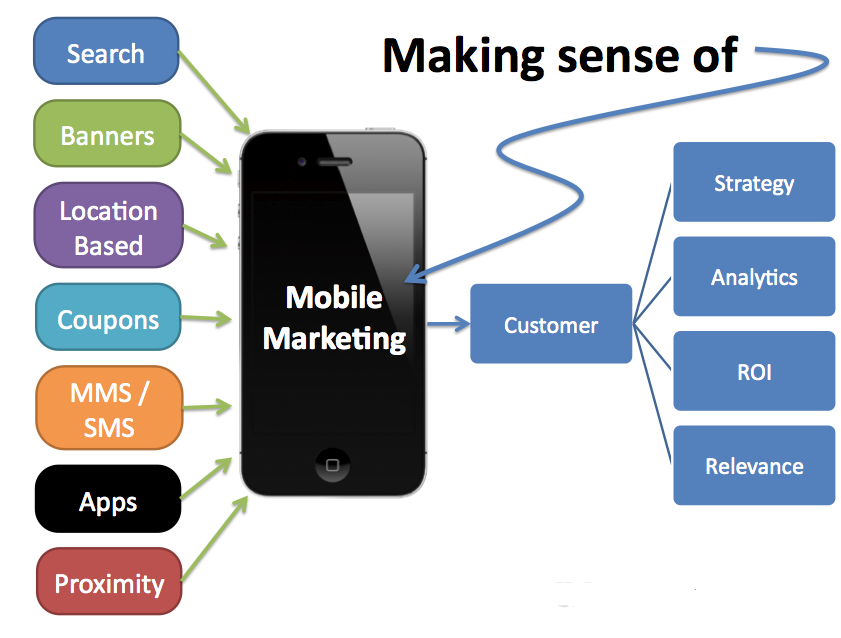Our Latest Projects




Mobile Marketing
Mobile marketing is marketing on or with a mobile device, such as a smart phone. Mobile marketing can provide customers with time and location sensitive, personalized information that promotes goods, services and ideas. In a more theoretical manner, academic Andreas Kaplan defines mobile marketing as “any marketing activity conducted through a ubiquitous network to which consumers are constantly connected using a personal mobile device”.
SMS marketing
Marketing through cellphones’ SMS (Short Message Service) became increasingly popular in the early 2000s in Europe and some parts of Asia when businesses started to collect mobile phone numbers and send off wanted (or unwanted) content. On average, SMS messages are read within four minutes, making them highly convertible. Over the past few years SMS marketing has become a legitimate advertising channel in some parts of the world. This is because unlike email over the public internet, the carriers who police their own networks have set guidelines and best practices for the mobile media industry (including mobile advertising). The IAB (Interactive Advertising Bureau) and the Mobile Marketing Association (MMA), as well, have established guidelines and are evangelizing the use of the mobile channel for marketers. While this has been fruitful in developed regions such as North America, Western Europe and some other countries, mobile SPAM messages (SMS sent to mobile subscribers without a legitimate and explicit opt-in by the subscriber) remain an issue in many other parts of the world, partly due to the carriers selling their member databases to third parties. In India, however, government’s efforts of creating National Do Not Call Registry have helped cellphone users to stop SMS advertisements by sending a simple SMS or calling 1909.
MMS
MMS mobile marketing can contain a timed slideshow of images, text, audio and video. This mobile content is delivered via MMS (Multimedia Message Service). Nearly all new phones produced with a color screen are capable of sending and receiving standard MMS message. Brands are able to both send (mobile terminated) and receive (mobile originated) rich content through MMS A2P (application-to-person) mobile networks to mobile subscribers. In some networks, brands are also able to sponsor messages that are sent P2P (person-to-person).
Push notifications
Push notifications were first introduced to smartphones by Apple with the advent of the iPhone in 2007. They were later further popularized with the Android operational system, where the notifications are shown on the top of the screen. It has helped application owners to communicate directly with their end users in a simple and effective way. If not used wisely it can quickly alienate users as it causes interruptions to their current activities on the phone. It can be much cheaper if compared to SMS marketing for the long run, but it can become quite expensive on the short run, because the cost involved in application development. Once the application is download and installed provided the feature is not turned off It is practically free, because it uses internet bandwidth only. SMS and push notifications can be part of a well-developed inbound mobile marketing strategy.
App-based marketing
With the increasingly widespread use of smartphones, app usage has also greatly increased. Therefore, mobile marketers have increasingly taken advantage of smartphone apps as a marketing resource. Marketers will aim to increase the visibility of an app in a store, which will in turn help in getting more downloads. By optimizing the placement of the app usage, marketers can ensure a significant number of increases in download. This allows for direct engagement, payment, and targeted advertising. There is a lot of competition in this field as well. However, just like other services, it is not easy anymore to rule the mobile application market.